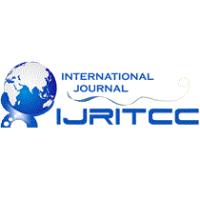Article,
A Technical and Economical Assessment of Replacement of Coarse Aggregate By Waste Tyre Rubber In Construction
International Journal on Recent and Innovation Trends in Computing and Communication, 3 (2): 549--553 (February 2015)
DOI: 10.17762/ijritcc2321-8169.150227
Abstract
At present days the disposal of waste tyres is becoming a major waste management problem in the world. One of the major environmental challenges facing municipalities around the world is the disposal of worn out automobile tyres. To address this global problem, several studies have been conducted to examine various application of recycled tyres rubber (Fine crumb rubber and coarse tire chips). It is estimated that 1.2 billion tons of waste tyres rubber produced globally per year. It is estimated that about 60 percent of waste tyres are disposed via unknown routes in the urban as well as rural area. This leads to varies environmental problem which include air pollution associated with open burning of tyres (Particulates, odor, visual impact, and other harm full contaminants such as polycyclic aromatic hydrocarbon) and aesthetic pollution. Therefore, it is necessary to utilize the waste effectively with technical development in each field. The waste tyres can be used as well sized aggregate in the it is cut in the form of aggregate and can be called as rubber aggregate. This not only minimizes the pollution occurred due to waste tyres but also minimizes the use of conventional aggregate which is available in exhaustible quantity. In this context, our present study aims to investigate the optimal use of waste tyres rubber as coarse aggregate in concrete composite. This paper focuses on engineering property of rubber concrete mixture. This includes workability, compressive strength. This paper presents an overview of the research carried out in an effort to utilize scrap tyres in Portland cement concrete. A concrete cubes are casted of M20 grade by replacing 1%, 2%, 5%, percent of tyre aggregate with coarse aggregate. Fresh and hardened concrete strength were identified
